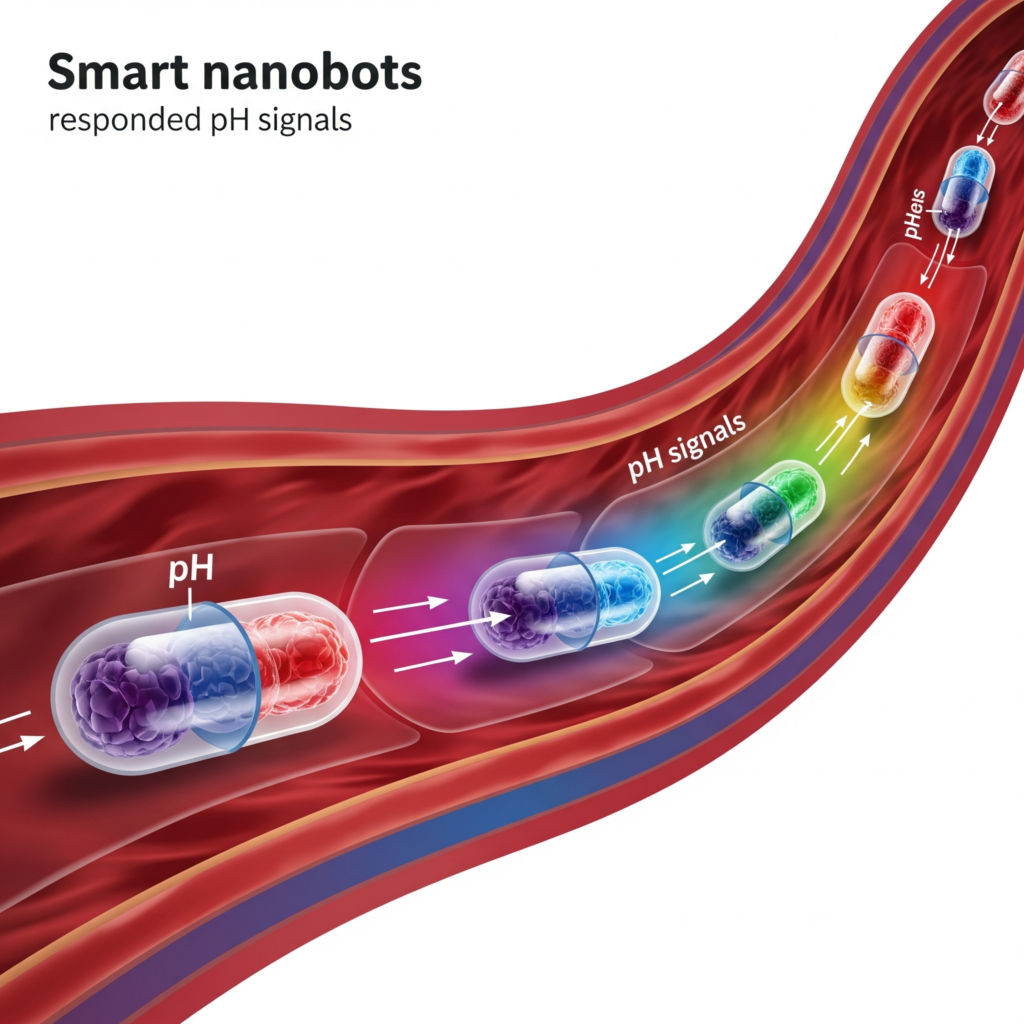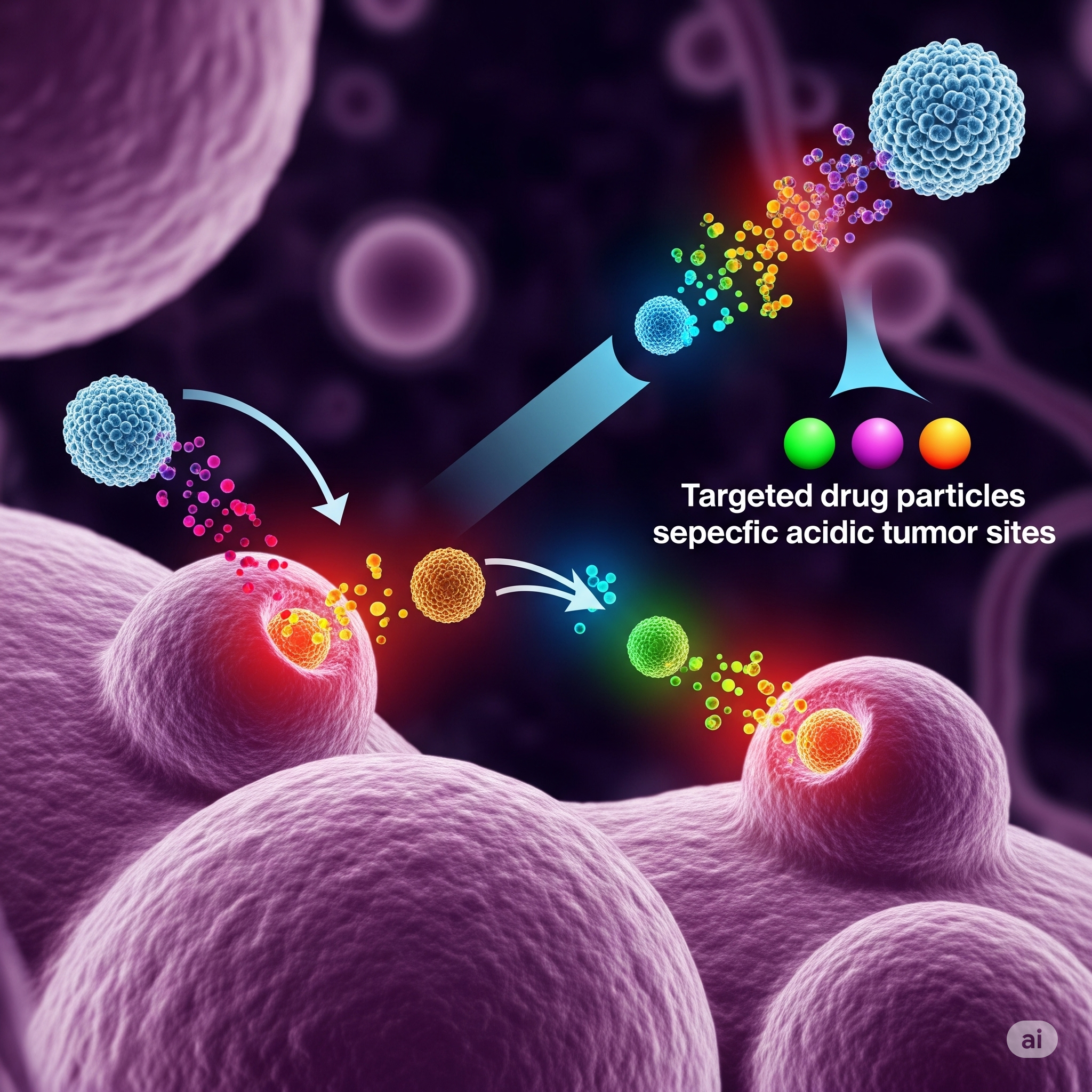š¦ Quick Summary:
- Smart nanoparticles can identify, target, and treat diseased cells with extreme accuracy.
- These systems respond to internal (pH, enzymes) or external (heat, light) triggers.
- They offer safer, personalized treatments with fewer side effects.
- Key applications include cancer therapy, drug delivery, and diagnostics.
- The future of medicine is shifting toward theranostics and real-time monitoring via nanotech.
š§When Therapy Gets Smarter
Imagine a treatment so precise it delivers medicine only to sick cells, leaves healthy tissues untouched, and adjusts itself based on the body’s internal environment. Welcome to the world of smart nanoparticlesātiny engineered agents that are revolutionizing how we diagnose and treat diseases.
From oncology to neurology, smart nanoparticles are transforming traditional medicine into personalized, responsive, and real-time therapy systems. This blog explores what they are, how they work, and why they represent the next frontier in precision therapy.
š§Ŗ What Are Smart Nanoparticles?
Smart nanoparticles are engineered nanoscale particles (1ā100 nanometers in size) designed to perform specific biomedical tasks such as:
- Targeted drug delivery
- Real-time diagnostics (theranostics)
- Controlled drug release
- Biological sensing
They are called āsmartā because they respond to stimuliāeither:
- Internal: such as pH, temperature, redox levels, or enzymes
- External: such as light, magnetic fields, or ultrasound
šÆ How Do They Work?
1. Targeting Specific Cells
Smart nanoparticles are often functionalized with antibodies or ligands that recognize specific cell markers (e.g., cancer cell receptors). This allows selective accumulation at the disease site.
2. Stimulus-Triggered Release
Once at the target, the nanoparticle senses a biological or environmental trigger (like acidic pH in tumors) and releases the drug payload only when needed.
3. Feedback Mechanism (Theranostics)
Some particles combine diagnostic and therapeutic capabilities, enabling real-time monitoring while treating the conditionāthis is known as theranostics.
š§¬ Types of Smart Nanoparticles
- pH-Sensitive Nanoparticles: Release drugs in acidic environments like tumor sites.
- Magnetic Nanoparticles: Guided by magnetic fields for hyperthermia or drug delivery.
- Light-Responsive Nanoparticles: Trigger release using infrared or UV light.
- Enzyme-Responsive Nanoparticles: Activate in the presence of disease-specific enzymes.
- Lipid or Polymer-Based Nanocarriers: Designed to degrade under specific physiological conditions.
š§¾ Applications in Modern Medicine
š©ø Cancer Therapy
Smart nanoparticles offer site-specific delivery, minimizing damage to healthy cells and reducing chemo-related side effects.
š§ Neurological Disorders
Crossing the blood-brain barrier is challenging, but smart nanocarriers are being developed to reach the brain for conditions like Alzheimerās or brain tumors.
š¦ Infection Control
Antibiotic-loaded nanoparticles can release drugs in the presence of bacterial enzymes, improving treatment while minimizing resistance.
š§¬ Gene Therapy
They help deliver CRISPR components or RNA therapies safely and efficiently to target cells.
āļø Benefits Over Conventional Therapies
| Feature | Traditional Therapy | Smart Nanoparticles |
|---|---|---|
| Targeted Delivery | No | Yes |
| Side Effects | High | Low |
| Controlled Release | No | Yes (trigger-based) |
| Real-Time Monitoring | Limited | Yes (with imaging agents) |
| Personalization Potential | Minimal | High |
š§ Challenges & Future Outlook
š¬ Challenges
- Toxicity and long-term safety
- Manufacturing complexity
- Cost of development
- Regulatory approvals
š Future Potential
- AI-integrated nanomedicine for real-time adaptive therapy
- Theranostic implants that diagnose and treat simultaneously
- Environment-sensitive bio-nanosystems for autoimmune and metabolic disorders
Smart nanoparticles are a foundation of next-gen medicineāmerging diagnosis, treatment, and monitoring into one.
š Conclusion: The Smallest Warriors in Modern Medicine

Smart nanoparticles are not just passive drug carriersāthey are intelligent therapeutic agents. They represent a monumental step toward personalized, efficient, and safer healthcare solutions. As we continue to refine their design and expand their uses, these tiny tools will play a huge role in the future of medicine.









+ There are no comments
Add yours